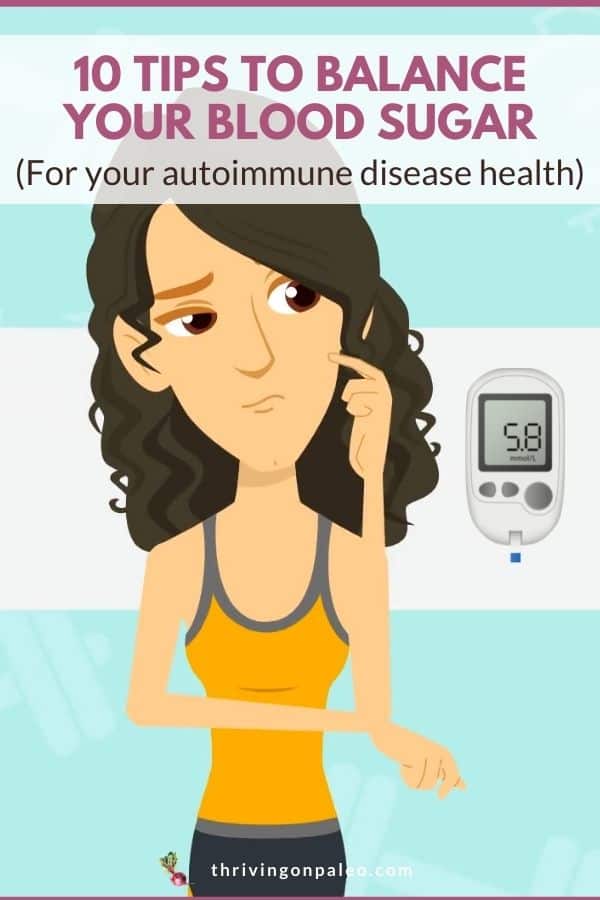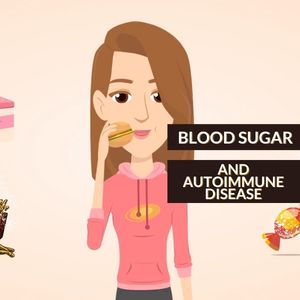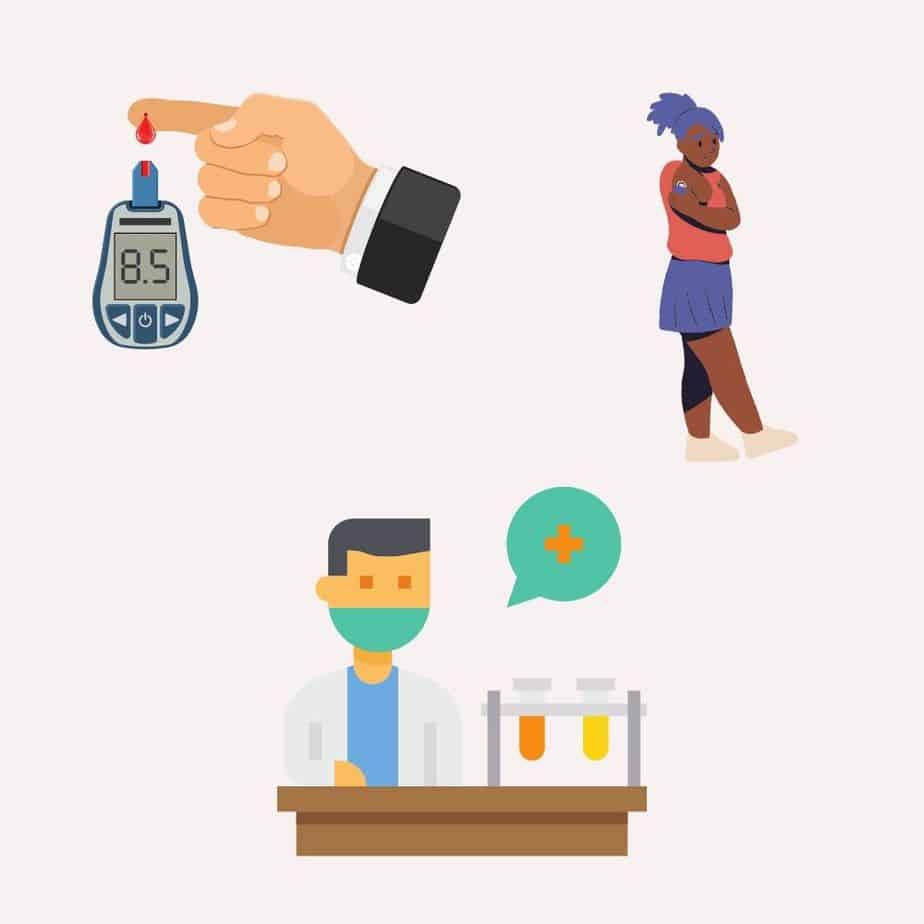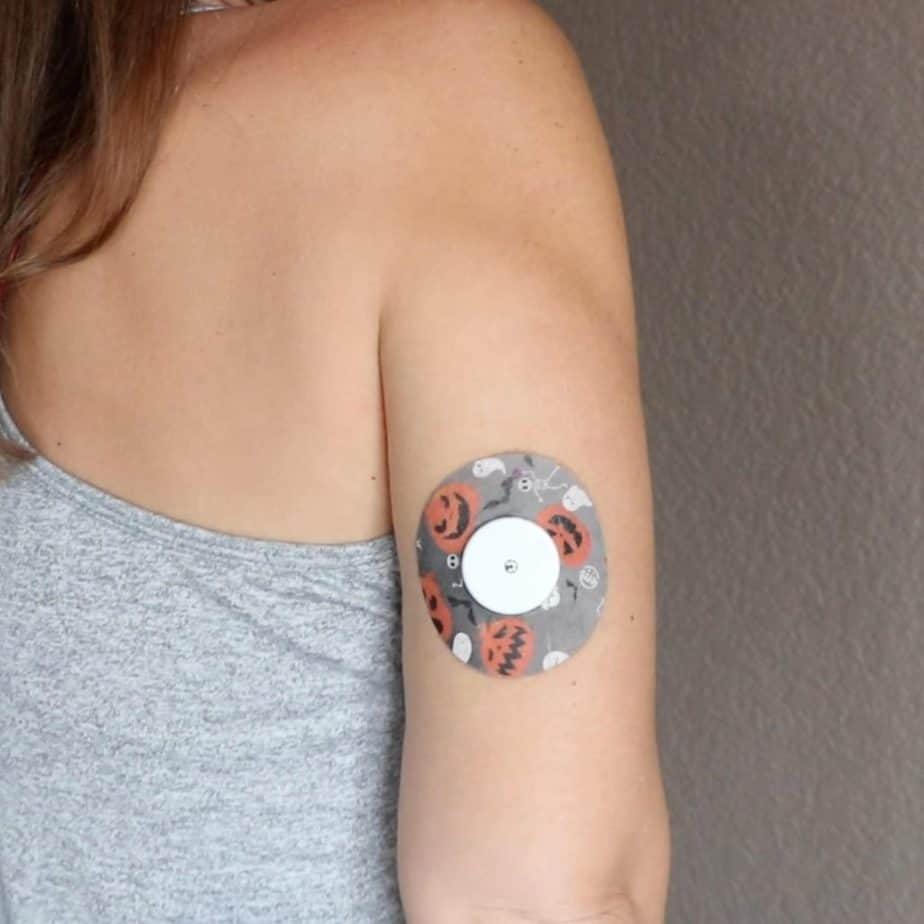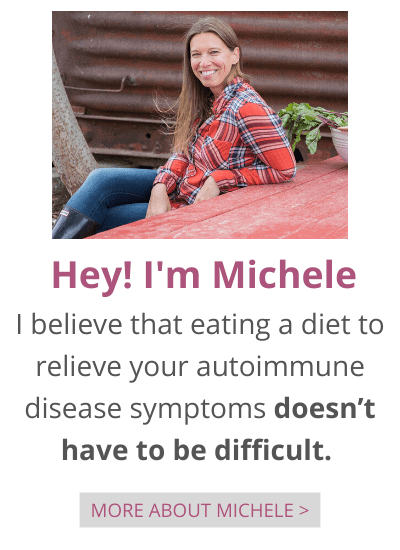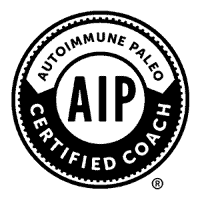This post may contain affiliate links. Please read my disclosure policy.
If your blood sugar is fluctuating a lot and you suspect that it may be causing or exacerbating your autoimmune disease symptoms, check out these tips to help stabilize it!
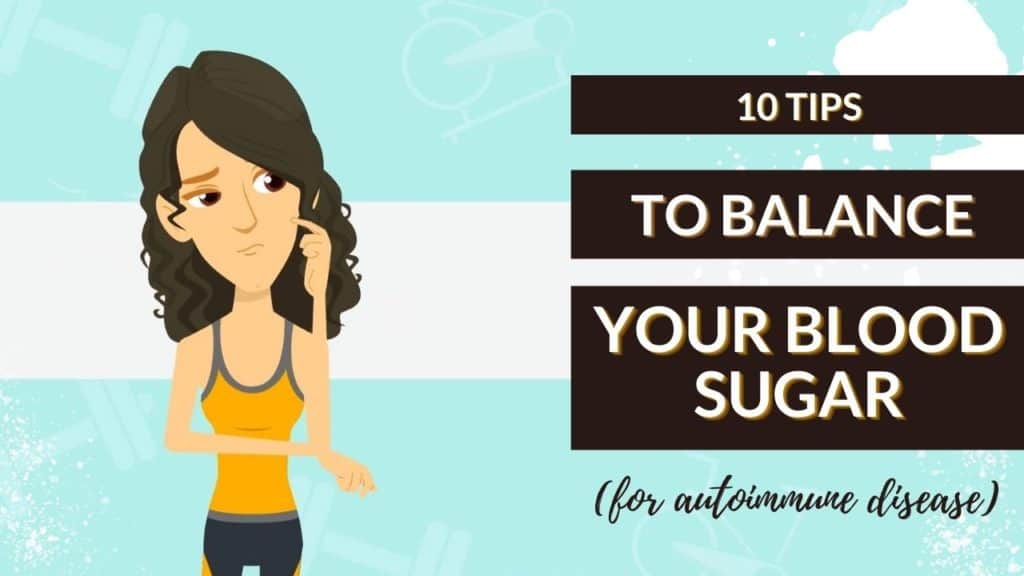
Disclaimer – I’m not a doctor nor a dietician, so please check with your medical professionals before making any changes.
If you’ve spent a bit of time learning what your blood sugars do after you eat meals – you may have discovered that you tend to get a lot of fluctuation or your numbers are higher than you expected.
If you haven’t done that investigation into your blood sugars, learn how to do that in this post.
And learn why the fluctuation can be bad for your autoimmune disease in this post.
You may have found that you’re doing just fine, which is great! No need to freak out about all of this or make any big changes. Just keep doing what you’re doing and this will be here for you if that ever changes.
But if you DO know that you’re having a lot of fluctuations, here are 10 tips on how to balance your blood sugars to help regulate your immune system and have lasting autoimmune health.
Note, this is not to replace doing something like the AIP diet to reduce inflammation, heal leaky gut, and determine any food sensitivities – those are equally as important. This is beyond that – if you want to continue to feel great while and after doing something like AIP.
Watch the video – or continue on to read:
Tip # 1 – Avoid refined sugar and highly processed carbs as much as possible
Now you probably already know this and if you’re actively trying to heal your autoimmune disease via diet you may even scoff at this. “Not me!”
But let me warn you that once you feel great again and don’t have the symptoms of your disease dragging you down each and every day, you may start to either experiment with having these, be in a situation where there isn’t much else available, or just generally go back to what you knew prior to healing.
Don’t automatically assume you’ll never touch it again because you never know what the future holds.
However, this ALSO includes things like organic, gluten-free, organic, Vegan, AIP, and Paleo packaged goods – sometimes these can even be WORSE than their conventional counterparts because oftentimes more sugar is needed to make them taste good.
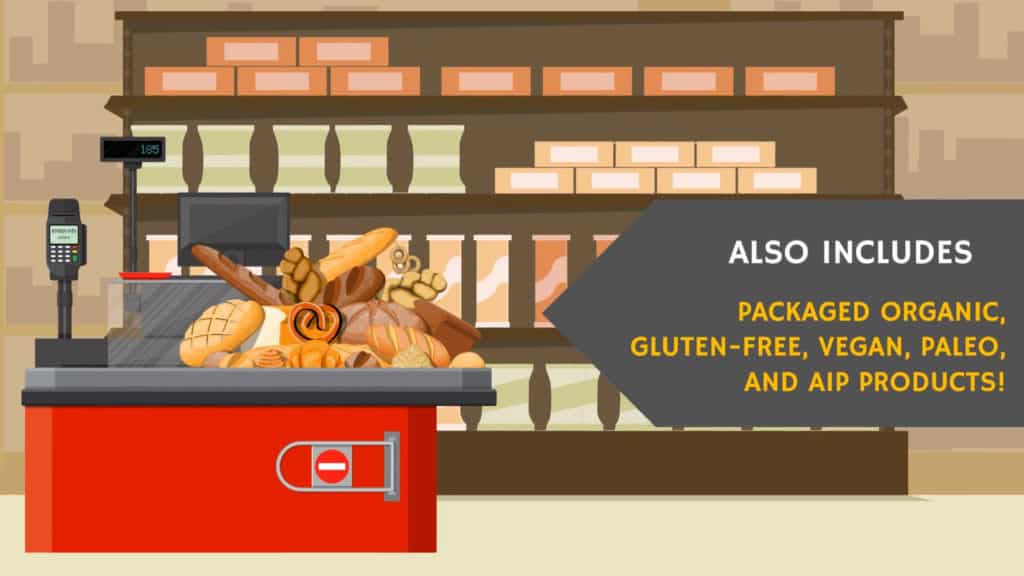
And just because something is grain-free doesn’t mean it’s not made with a starch like tapioca, cassava, arrowroot, etc – these can be hard on blood sugar.
It really pays to read labels and don’t overdo any of these. Just don’t get caught in the trap of “Oh, it’s organic and gluten-free and in the uber-fancy health food store, therefore it must be healthy and I can eat as much of it as I want.” Read the labels.
And one more note on label reading – some manufacturers often like to make their products look healthier than they are and will, for example, make what obviously is a single serving size bag contain 2, sometimes 3 or even 4 servings!
So if you look on the label it might look like a healthy small 10 g carb snack, but it could be 40 g for that teeny tiny little bag. Just be careful when reading the labels that you’re understanding what it REALLY is saying.
Tip # 2 – Don’t drink your carbs
Recent estimates say the average American adult eats or drinks 17% of daily calories from added sugar. These are mainly in the form of sodas, sugary coffee drinks, fruit juices, and sports drinks.
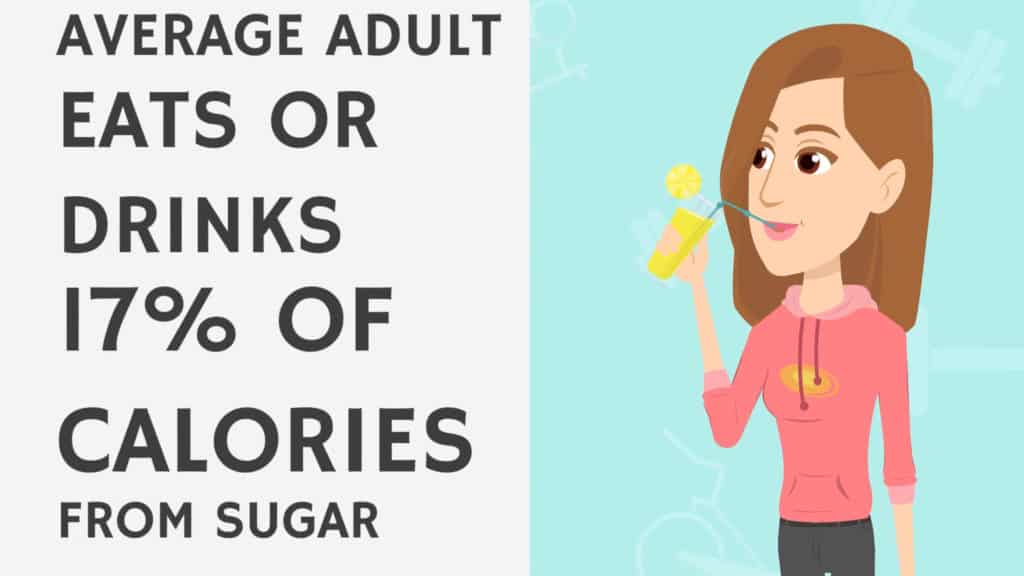
Now you may be avoiding soda and fluorescent blue Gatorade, but juice is definitely a trap that the health-conscious can get stuck in. Unfortunately, without the fiber from fruit or veggies, these juices can get turned into sugar rather quickly in the body and can spike blood sugars.
And even a small amount can be a problem. If you read my “What I learned from wearing a continuous glucose monitor” post, you’ll know that I was seeing some pretty big spikes just from drinking a small, probably ½ cup, glass of orange juice each morning – and that was WITH my meal. That juice would raise my blood sugar, then I’d come crashing down and have a low blood sugar an hour later, which would then force me to eat more carbs. Then my blood sugar would go back up, then back down, and so on and so forth. Drinking juice seems to be one of the easiest ways to get on the not-so-fun blood sugar rollercoaster.
But if you needed another example of how it can really raise your blood sugar quickly – it’s my Type 1 Diabetic son’s 1st choice for getting out of a dangerously low blood sugar as quickly as possible. It seems to work even faster than CANDY. Makes you think.
I will say though that some juices can be ok – if it’s made with mainly low-carb vegetables, then it doesn’t seem to be all that bad. But unfortunately, many of those can taste like dirt, so to make them palatable, manufacturers and juice shops add fruit. Again, pay attention to ingredients.
Also bad – going through your local Starbucks drive-thru and getting a vase-sized cup of sugar posing as coffee. But you knew that, right?
Tip # 3- Try to always eat carbs with protein and fat
A carb by itself will typically turn into glucose in your body a lot faster than a carb paired with some protein and fat. You don’t always have to do both protein AND fat, but including these with a carb will help slow down the digestion and subsequent turning of carbs into sugar within the body.
This often gives your pancreas time to pump out the correct amount of insulin as well, instead of just dumping a ton to try to cover everything, which leads to low blood sugars, inflammation, and eventually, insulin resistance.
Some examples if you’re on a gluten-free diet would be a cup of wild rice, a piece of roast chicken, and an avocado-cashew sauce. Or for a snack, a piece of gluten-free whole grain bread with an olive tapenade on top.
If you’re on Paleo this might look like an almond and tapioca flour pancake with some eggs and bacon and hazelnut butter smeared over the pancake. Or for a snack, an orange with a handful of macadamia nuts.
If you’re doing the Autoimmune Paleo or AIP Diet, this might look like a cup of diced, roasted sweet potatoes with a piece of roasted chicken and a baked avocado. Or for a snack, an apple drizzled with coconut butter.
Tip # 4- Pay attention to Glycemic Index AND Glycemic Load
The glycemic index, or GI, gives a number from 0-100 for how quickly a food will raise blood sugar. 100 is pure sugar.
The lower a food’s GI, the slower blood sugar will rise after eating it.
However, this doesn’t give the full story.
Take watermelon for example – its GI is 80, which would make it a terrible food for blood sugar, right? Not so fast.
Unless you’re eating the whole dang watermelon, you’re not getting very many carbs in a serving – only 6 g per 120 g serving, which isn’t many carbs at all! So even though it may raise your blood sugar quickly, it probably wouldn’t raise your blood sugar a LOT because there isn’t that much sugar in the watermelon to turn into glucose in your body.
So this is where Glycemic Load (GL) comes into play – it factors in serving sizes and how much glucose you’ll be eating from that serving. So for that watermelon, it only has a GL of 4.
But take corn tortillas as another example – the GI is lower than watermelon at only 52, but the GL is higher than watermelon at 12 per a serving size of 2 tortillas. (Carbs are 24 g). So it will most likely have a bigger effect on your blood sugar than watermelon.
Both of these numbers are helpful for balancing out meals – try not to have too many high GI or GL foods in one meal and if you are suffering from a lot of high blood sugars, see if eating lower GI and GL foods help.
The information for these can be found for foods at The University of Sydney’s site.
Tip # 5 – Quantity matters
High blood sugar and the associated symptoms come because you’ve eaten too many carbs for what your body can handle at that time. So naturally, this translates to making sure you don’t overload your body with too many at one time.
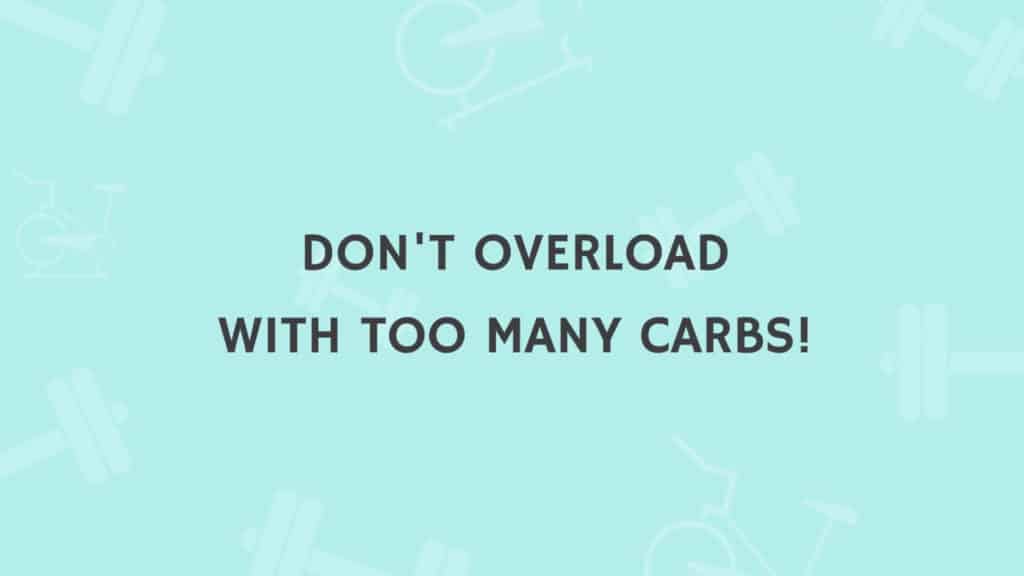
This will be different for everyone, so it’s something you’ll have to experiment with, but for example, I learned that I can eat about a ½ cup of rice in a meal without it doing too much to my blood sugar, but more than that and I definitely notice my blood sugar rising.
Standard amounts of food in a meal have crept up over the years though, so it’s definitely something to pay attention to.
Plus there are only so many nutrients one can get from a food- eating a ½ cup to 1 cup of a high carb food most likely will give you all the nutrients you need. Focus more on varying things and having a smaller amount.
If you’re struggling with this, using a smaller plate can actually help quite a bit!
Tip # 6- Exercise is important
Exercise has been proven in many studies to improve insulin sensitivity – which you want (it’s the opposite of the undesired insulin resistance). Plus it also helps to use up the glucose in your bloodstream after meals because glucose is the primary fuel that the body uses.
So exercise can be a very helpful and important part of your blood sugar control.
Exercise, especially things like walking, can be extremely helpful right after a higher carb meal because it can help to blunt any blood sugar spikes – making them not go as high or high for so long. A simple walk around the block after meals can be wonderful for blood sugar control.
However, the intensity and frequency of exercise DO matter. This is something you’ll need to play around with yourself, but high-intensity exercise and too much exercise without adequate exercise can be stressors on your body. This in itself can raise blood sugars due to release of the stress hormone, cortisol.
This isn’t to say you can’t do high-intensity exercise, but do be mindful of what happens when you do, and give yourself adequate recovery afterward.
For example, I will do a high-intensity exercise approximately once a week for about 30 minutes and then the rest of the week I just walk, do yoga, mat pilates, Barre, etc – gentle things that move my body and get my heart pumping, but that don’t trigger the stress response. This is my sweet spot, and for some of you it may be 2 x a week and for others, you may not be at the point where you can handle ANY high-intensity exercise right now. That’s ok. This is all part of the autoimmune journey.
I couldn’t handle any at all for the first year and then I go through phases where this happens again (usually during flare-ups of my Hashimoto’s). So just be gentle with yourself and do what feels right for your body.
If you are really tired, feel like you’re walking through mud, and don’t want to move, chances are you’ve done too much, so back off for a few days. If you push through, chances are your body will produce cortisol in response, making your blood sugars rise as a result.
Tip # 7- Watch out for starchy grain-free flours
This one is mainly for those of you on the Paleo and AIP diets as it’s very easy to get caught in the trap of “Oh, it’s a grain-free muffin, therefore it must be healthy.”
Just like in Tip # 1 where I said to be cautious of grain-free packaged goods, you need to pay attention to what ingredients you’re using to make your own baked goods, pancakes, waffles, etc – even dairy-free cheese can be in this category!
Many of these items on these diets are made with starchy and extremely high-carb flours like cassava, tapioca, and arrowroot.
It’s not that these flours are inherently bad and that you shouldn’t eat them, but you need to pay attention to the quantity and frequency that you’re eating them.
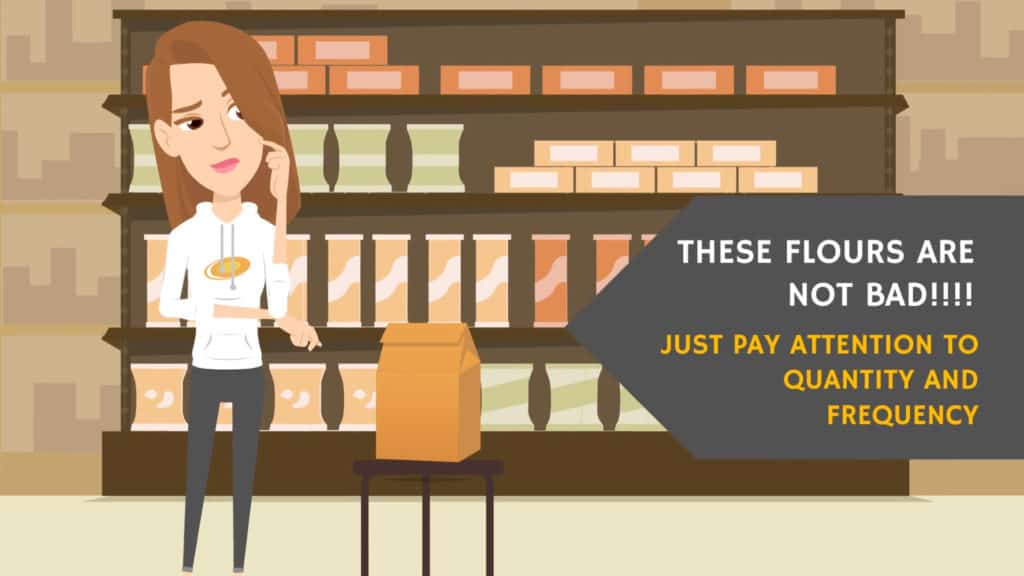
If you’re just replacing your morning pancakes with a cassava pancake, and then your lunch bread with a tapioca-based flatbread, and then your dinner is cassava flour pasta – you’re not doing yourself any favors with your blood sugar.
Focus more on eating vegetables, high-quality meat and seafood, healthy fats, and some fruits, rather than these “comfort” foods.
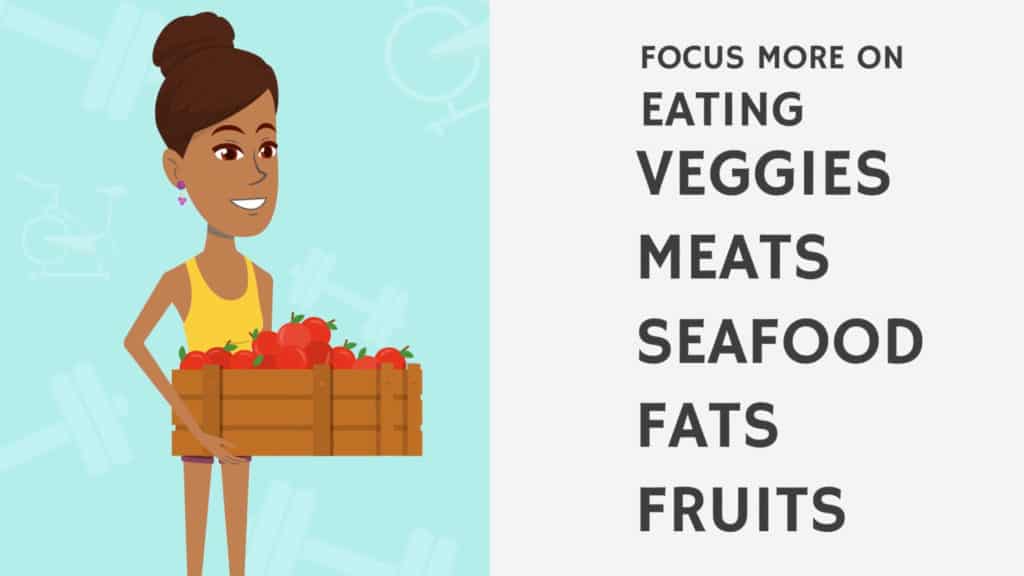
It may be helpful to use a meal tracker like MyFitnessPal for a few days to see exactly how many carbs you’re eating from these starchy flours – I know when I first did this my eyes just about popped out of my head, ha!
It’s just so easy to get lulled into thinking you’re eating a completely healthy diet because it’s labeled Paleo or AIP or whatever, but remember, ANY diet can be turned into an unhealthy junk food diet. The junk food just might look a bit different depending on what ingredients you can eat.
Tip # 8- Reduce stress
Now, this tip encompasses ANY stress on your body, not just stress because you have a big deadline at the end of the week or your dishwasher just broke so you’re facing a hefty repair bill.
If you recall, the reason that high or low blood sugars are so bad for autoimmune disease is that they cause the body to release the stress hormone, cortisol. And cortisol release tends to raise blood sugars. It's a bad cycle to get into.
So by reducing the amount of cortisol your body produces because of stress will help keep your blood sugars in check.
I know it’s kind of cliche these days to say “reduce stress,” but it really is important! Stress relief doesn’t even have to be the traditional things like meditation – just finding a hobby that you enjoy, spending some time cuddling with a pet, or limiting the scary or dramatic tv shows you watch can be extremely helpful.
Stressors other than acute “deadline or bill” kind of stress can be things like:
- lack of sleep
- caffeine
- Too high-intensity or too much exercise
- Fasting
- Changing diets
- Food intolerances and allergies
- Extreme heat or cold
- Altitude
- Illness (both acute like the flu or a cold and chronic)
- Sugary foods before bed (especially if you wake up at 3 am with anxiety)
Now some of these sometimes could be worth a short-term release of cortisol, like changing diets for instance. If you’re on a terrible diet that isn’t doing your body any favors, switching to a new one may release some cortisol for a short while until you and your body adjust, but then you’ll be better off for it. Worth it.
And some may not affect you at all. For example, through all of my experimentation wearing a Continuous Glucose Monitor, I have not once seen a correlation between me drinking coffee and high blood sugars. But I know of others who shoot right up and stay there after drinking a tiny cup.
So again, everyone is highly individual and you should experiment to find out what affects you.
Tip # 9- Find your daily carbohydrate tolerance
Because we’re all so individual I can’t give out a blanket “do this diet or stick to this many carbs each day” for blood sugar control.
What I CAN say though, is that you’ll most likely have a certain amount of carbs that you can tolerate before you feel symptoms from high blood sugars, like feeling like you have to take a nap after a meal. As soon as you feel that, it probably means you’ve eaten too many carbs for what your body can handle.
Unfortunately, if this happens multiple times each day your blood sugars will more than likely raise and stay up at that higher level, never coming back down into a normal, healthy range.
This will also lead to insulin resistance and eventually, Type 2 diabetes. So to avoid this, you need to figure out a ballpark amount of carbs that you seem to be able to tolerate without symptoms and try not to go over that often, if at all.
For some people, this may look like a Ketogenic diet with less than 20-50 g of carbs a day. For others, like me, it might mean less than 150 g a day. And for others still, you might be able to tolerate even more.
Again, this is where tracking your meals for a few days or weeks with something like MyFitnessPal (or your favorite tracking tool) and using a glucometer to measure your blood sugars may be helpful to determine the actual numbers for you. (see the ways to measure blood sugar here)
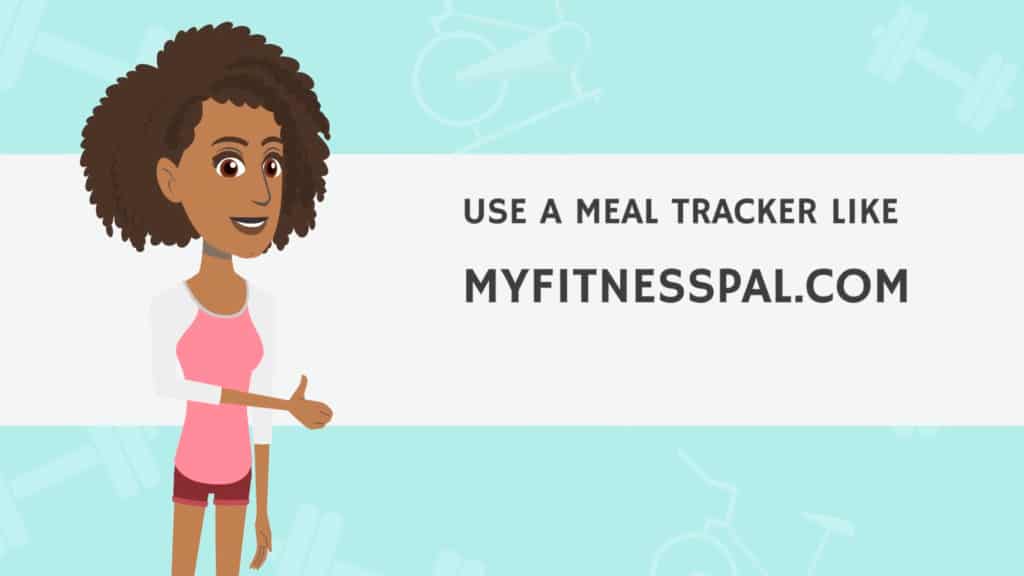
I’ve found that if you stick to this tolerance or under, blood sugar comes back into and stays in a normal, healthy range.
It might not be your most favorite thing to do – after all, carbs tend to be associated with comfort! But I also think you can get away with eating some of the higher-carb things you might want on an OCCASIONAL basis, like for a special occasion or on a vacation.
Once you figure out your carb tolerance you may notice some pesky, hard-to-resolve symptoms go away as well, like poor sleep, irritability, sugar cravings, and mid-day energy crashes.
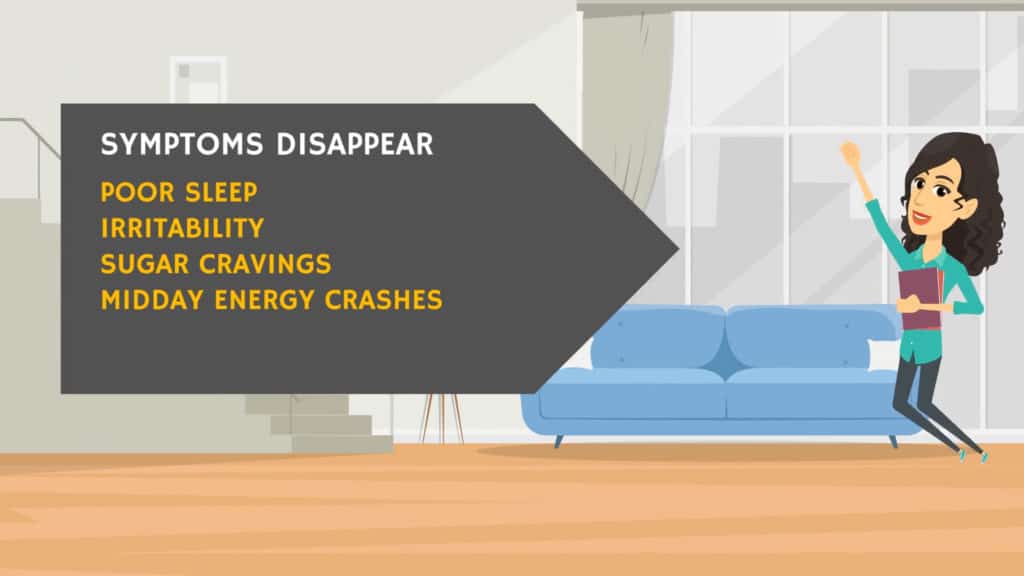
Tip # 10- Don’t JUST focus on blood sugar
Sometimes blood sugar spikes can be worth it.
Whether it’s because there are nutrients in a high-carb food that’s hard to get anywhere else, or because certain carbs are a wonderful food for your gut microbiota, there are many reasons why eating foods that will raise your blood sugars can be good.
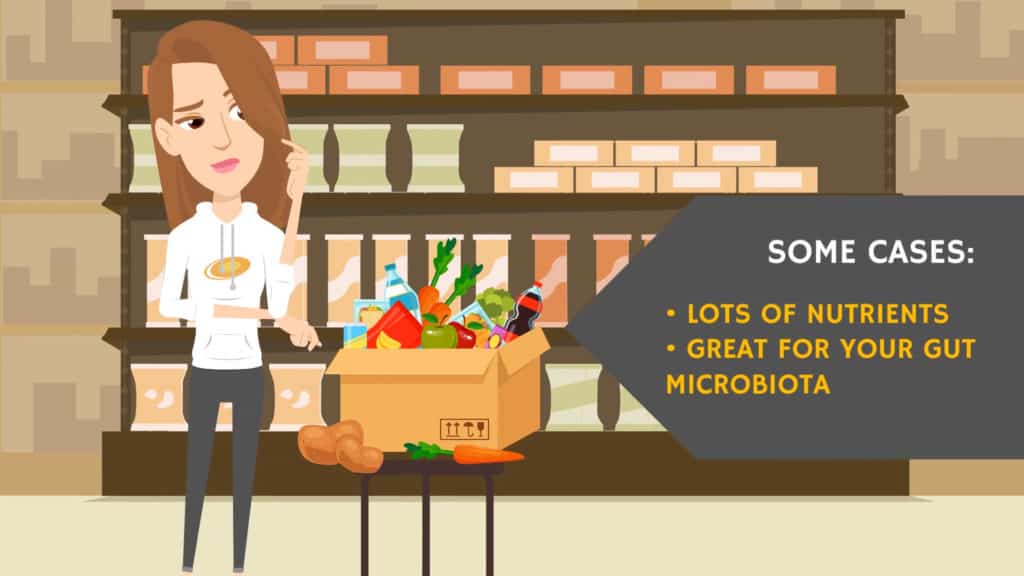
Plus you’re gonna have times when special celebrations, vacations, and whatever else come about where you’ll want some sugary desserts or sentimental treats.
You don’t have to avoid these things completely. It’s all about balance – eat those particular foods with low-carb foods so it’s not too much all at once and don’t have them with EVERY meal – space it out.
A blood sugar spike every so often is not going to have the same detrimental effect on your immune system and inflammation in your body that constant high blood sugars or several spikes in a day will.
So the bottom line is, enjoy life but just keep an eye on how many times you’re seeing your blood sugars go above the normal amount or that you’re feeling symptoms after meals.
Because remember, the whole problem with this is that your body is producing stress hormones which lead to inflammation and immune system dysregulation.
STRESSING over being perfect on your blood sugars is um, kind of counterproductive, eh? So practice balance and do your best.

You may also like:
